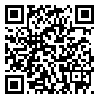Volume 15, Issue 1 (2015)
MCEJ 2015, 15(1): 131-143 |
Back to browse issues page
Download citation:
BibTeX | RIS | EndNote | Medlars | ProCite | Reference Manager | RefWorks
Send citation to:



BibTeX | RIS | EndNote | Medlars | ProCite | Reference Manager | RefWorks
Send citation to:
naghipour M, Salimbahrami S, Nemati M. The Role of Ductile Behavior of Connection Elements on Seismic performance of CBF. MCEJ 2015; 15 (1) :131-143
URL: http://mcej.modares.ac.ir/article-16-10152-en.html
URL: http://mcej.modares.ac.ir/article-16-10152-en.html
Abstract: (5471 Views)
Nonlinear behavior of members and their connections during earthquake caused ductility in buildings. Also increasing the number of resisting elements of structure reduces cost of repair and reconstruction in bending structures. In contrast, the concentrically brace frames do not have sufficient ductility But their vulnerable members are limited, thus their reconstruction were much less expensive than bending frames. In order to overcome concentrically brace frames disadvantages and they providing good ductility for them, Extensive research has been conducted in the past two decades by researchers. Several methods have been proposed by various researchers which were resulted in increasing the ductility of concentrically brace frames. In this research, a new type of energy dissipation elements was introduced. This dissipation consists of a ring which increased the ductility and earthquakeenergy absorption and can be used in braced frames. Also, during an earthquake, it has depreciates significant portion of input energy by entrance to non-linear phase and forming flexural plastic hinges, so it prevent entrance of other members to non-linear phase and buckling of brace members. In order to increase the capacity of this member, a box was used that connected to the ductile ring by two plates. By increasing the diameter, rate of ductility decreased. However increasing the thickness would enhance the ductility. Stresses and deformations were been studied by using the finite element under cyclic loads. Obtained hysteresis curves indicate that the introduced element can be act as an energy absorbing member and also act as a fuse to control the buckling of brace, while providing to the required ductility. Pushover analyses for determining the seismic demand of structures and especially in earthquake engineering based on performance, it has been considered by many researchers. General basis of this method is a nonlinear mathematical model of the structure was under a lateral load pattern and this lateral load increases at a constant rate until the structure reaches a predetermined target displacement. This target displacement was measured at a control point. During the ascending increase in lateral load, resistance and stiffness of structural components were corrected at each step according to predefined nonlinear. Also performance of this ductile element was investigated in 2D concentrically brace frames under Pushover analyses. Obtained results from pushover analysis indicated that ductile element can decrease base shear force and also increase ductility of structure. The obtained results indicate that installation or replacement of steel ring in proposed connection was easily possible with low cost and high speed. Furthermore, nonlinear static analysis obtained results reflects the lower base shear force for braced frame with proposed element compared to braced frames without proposed element Which results in Cutting down construction and foundation strengthening costs of building. At the end, results of Pushover analysis of concentrically braced systems can be mentioned. High behavior coefficient of structural braced systems with proposed element represents suitable performance and ductility of proposed element in building.
Article Type: Original Manuscript |
Subject:
--------
Received: 2013/06/15 | Accepted: 2015/04/21 | Published: 2015/05/17
Received: 2013/06/15 | Accepted: 2015/04/21 | Published: 2015/05/17
| Rights and permissions | |
 |
This work is licensed under a Creative Commons Attribution-NonCommercial 4.0 International License. |







